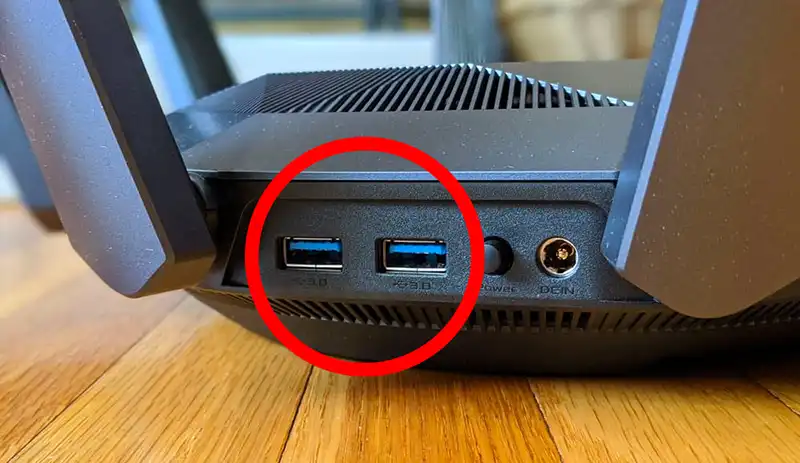You can also be interested in these:
- Why do you need cybersecurity for your router?
- Can I change the location of my modem?
- Does using an Ethernet cable affect the WiFi speed?
- Is your internet slow on one computer but fast on another? Learn what to do
If you have ever connected your computer to the router, you may have noticed that it has a USB port. Contrary to popular belief, this port is not only used for diagnostic purposes, but it also gives the router the ability to connect external storage devices such as a hard drive or an SSD. Is it practical to use your internet router for this purpose? Is it a better alternative to setting up a home NAS? We will explain it to you.

Although it may seem surprising, your home internet router is a computer that has to manage all the incoming data packet requests from all devices at the same time and at high speed. This has led to routers having complete operating systems, RAM memory, and the ability to manage peripherals such as storage and printers to share among multiple users simultaneously. As a result, if you have a small office, you can share files in a common space, or at home, you can print directly from any computer without the need for your printer to support WiFi.
Why does my router have a USB port?
Its basic purpose is straightforward – it allows us to update the internal firmware of the device if it does not have internet connectivity. We must assume that a non-functional router cannot be connected to the internet. Hence, we find that we have a USB port on the router that we can use for other purposes, which we will describe below.
Is it convenient to use a router instead of a NAS for storage?
It depends on the circumstances. Many routers have a low power USB port, meaning they can’t connect to large capacity storage units that require additional power, unless external power is provided. They are thus typically limited to flash drives with capacities in the tens of gigabytes and a USB type A connection. If you want to have a media server, it’s better to have a NAS.
However, if you’re working in an office or with small files, then a router might be an economical option. However, you’ll have to access the router’s configuration to enable its USB port, making it more complicated than using a NAS, which will appear as a connected network device. Additionally, some Internet providers use a proprietary firmware that can block access to that function, and some router manufacturers limit the function of the USB port to manufacturer diagnostic only. Thus, it depends on how it will be used.
Using the router as a Wi-Fi printer
Another use for the USB port is the ability to share peripherals through that port, which is actually its main utility. However, for us, it’s the most useful, especially if you have a printer that has worked perfectly for years and you want to save money. After all, we all have a router with a USB port today and buying a new printer can be considered an additional expense in your office.
The problem with this at home is that many users have the router close to the TV and it’s not a good idea to have a printer in the living room. Therefore, it’s more of a solution for offices, and in that case we highly recommend it, as it saves a lot of time when printing documents and avoids having to buy a Wi-Fi enabled printer, which tend to have higher prices due to this feature.
More stories like this
- Why do you need cybersecurity for your router?
- Can I change the location of my modem?
- Does using an Ethernet cable affect the WiFi speed?
- Is your internet slow on one computer but fast on another? Learn what to do
- Acer Predator Connect X5 full review
- Asus CMAX6000 router review